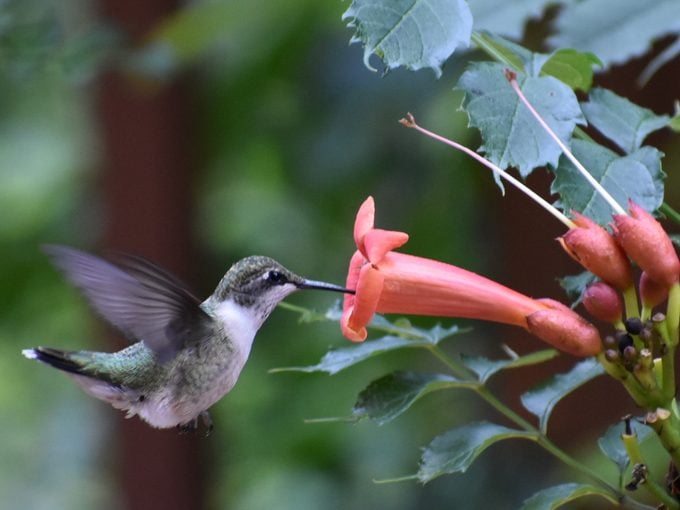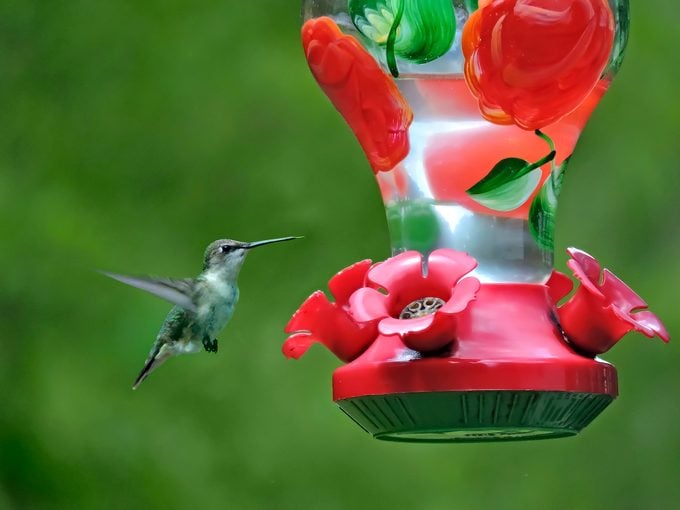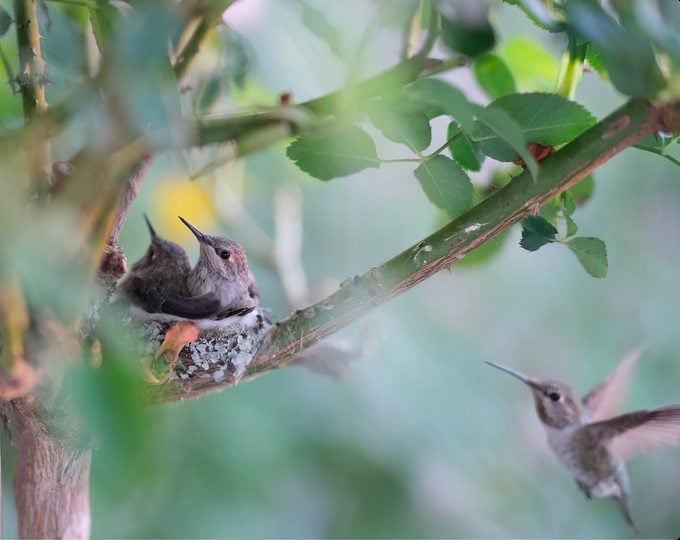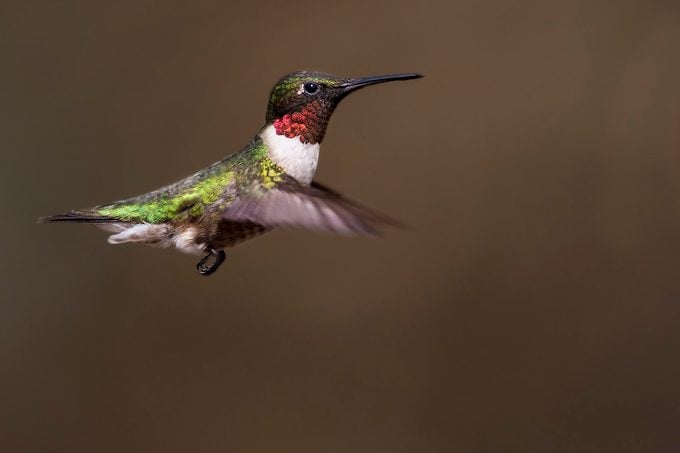Ask the Experts: Hummingbird Behavior Explained
Updated: Jan. 03, 2024
Birding experts answer some of the most commonly asked questions about fascinating hummingbird behavior that you might see in your backyard.

When a hummingbird visits your backyard nectar feeder or flower garden, it’s downright enchanting. They seem to hover magically in the air and zip around in the blink of an eye. But these can sometimes be tricky birds to attract, and we receive a lot of questions from readers about these tiny fliers. So we’ve answered some questions we get asked the most often about hummingbird behavior.
On This Page
How do I attract more hummingbirds to my yard?

Think red! Colorful feeders visible from a distance and classic, tube-shaped flowers are two ways to increase your chances of attracting these birds. It’s especially worthwhile adding nectar flowers to your garden and keeping feeders filled with sugar water and clean at all times.
Check out the top 10 red hummingbird flowers.
Why do hummingbirds chase others away from the feeder?
These birds have an instinct to defend their food sources because a patch of flowers produces only a little nectar each day. Even at a feeder, hummingbirds practice the same defensive behavior.
A good strategy to prevent one from dominating the food source is to put up several feeders, located some distance apart from each other. If a feeder is out of sight from the others (around a corner, for example), it makes it harder for one bird to control them all. In a situation like that, even the more aggressive hummingbird may give up and just share with others.
Do fighting hummingbirds ever hurt each other?
How do I know if a female hummingbird is nesting nearby?

“A female Anna’s hummingbird doesn’t seem to leave my yard. Is it possible she’s nesting nearby?” asks Birds & Blooms reader Marilyn Conner.
If your yard is well supplied with flowers or feeders, a hummingbird might stay close whether or not she has a nest. Her behavior will offer clues as to whether she is actively nesting or raising young. She’ll be on the nest and out of sight most of the time if she’s incubating eggs, zipping out only occasionally to eat. If she’s building a nest or feeding young nestlings, you’ll see her make frequent trips back and forth. But if she perches in the open most of the time, she’s probably just enjoying your yard and not nesting.
Here’s why hummingbirds are the ultimate bird supermoms.
Hummingbird courtship behavior to attract mates
“A male ruby-throated hummingbird likes to zoom back and forth quickly while making a high-pitched chirping noise in my yard. What’s he doing?” asks reader Kelly Kothenbeutel.
Male ruby-throats put on impressive rituals called shuttle displays as part of their hummingbird courtship behavior. A male quickly zooms from side to side in a shallow arc with his throat feathers flared out, making a loud whirring noise with his wings.
This display is usually directed at a female hummingbird, but she may be hard to spot if she’s hidden in the foliage of a tree or shrub and is just watching without reacting.
Do hummingbirds mate for life?
Male and female hummingbird behavior
“I see a lot of female hummingbirds at our feeders but no males. Why could that be?” asks reader James Hoover.
A few factors could come into play. Some studies have found slightly more females than males in the population of adult ruby-throated hummingbirds.
Males have somewhat different behavior, too. They often perch higher so they can watch for rivals and visit feeders only briefly, while females spend a longer time at feeders while they’re facing the demands of raising young without the help of the males. And in late summer, adult males are far outnumbered by all the newly independent young hummers, which look almost the same as adult females. On the other hand, it may be just an odd coincidence at your feeders.
When do hummingbirds migrate?

It depends on where you are. In the South and along the Pacific Coast, you may have hummingbirds all winter. Farther north, hummingbirds will probably be gone by October. Later in fall, however, there may be the odd hummingbird from the West showing up in the East. If you keep your feeders up until November, you might attract some surprising visitors.
Don’t worry that your feeders might keep the locals from migrating. Their migration instinct is very strong. They will leave when they’re ready, and neither flowers nor feeders can tempt them to stay.
Psst—here’s where hummingbirds go in winter.
Do hummingbirds prefer open or more secluded habitat?
Different kinds of hummingbirds have different preferences. But in general, North American hummingbirds prefer open habitats. If you want to create habitat for hummingbirds, design an area with some trees and shrubs, a good supply of nectar flowers and plenty of open space.
Did you know: In the American tropics, some types of hummingbirds live in the deep shadows and almost never come out into the sunlight.





















